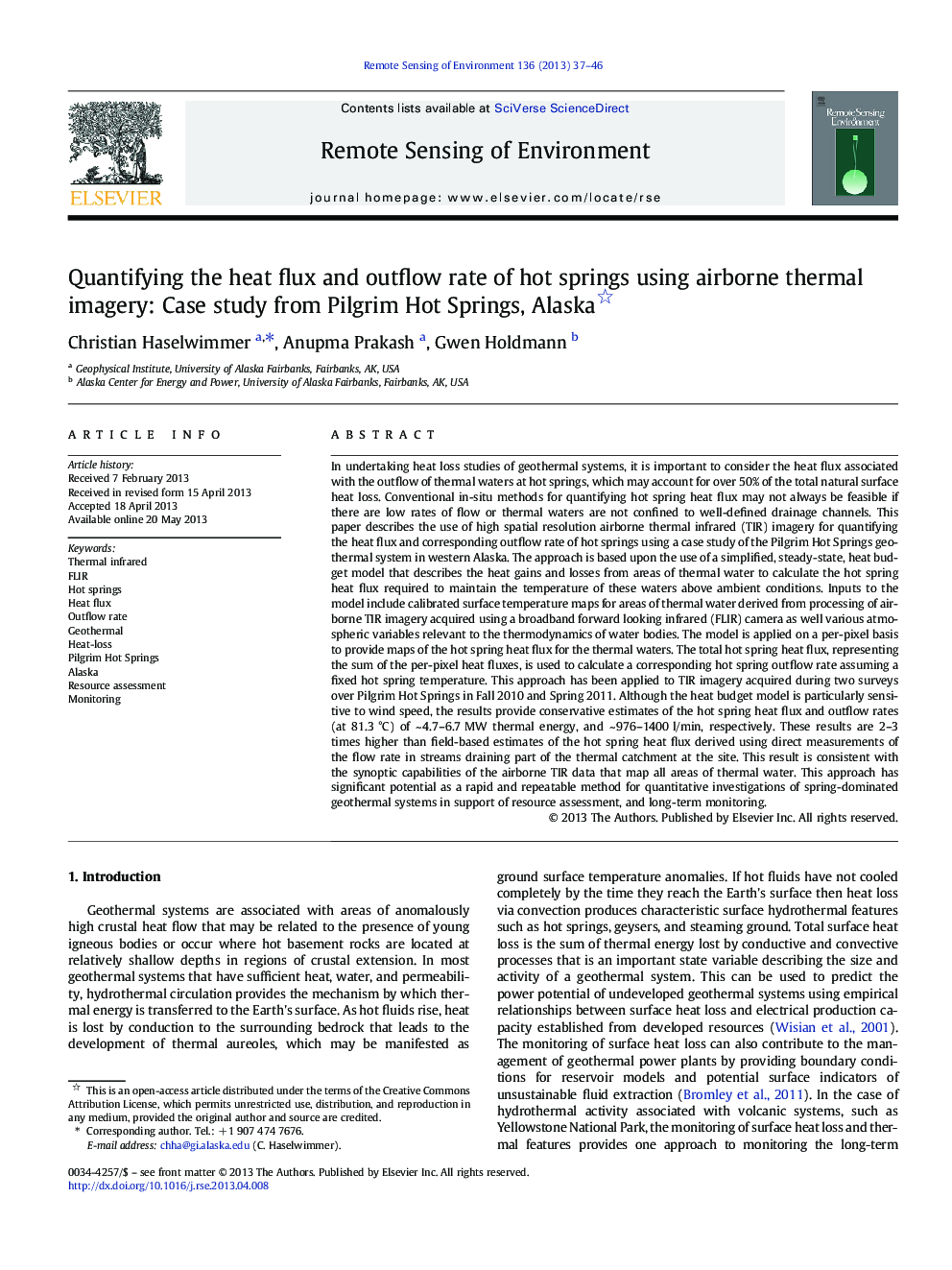| کد مقاله | کد نشریه | سال انتشار | مقاله انگلیسی | نسخه تمام متن |
|---|---|---|---|---|
| 6347381 | 1621264 | 2013 | 10 صفحه PDF | دانلود رایگان |
عنوان انگلیسی مقاله ISI
Quantifying the heat flux and outflow rate of hot springs using airborne thermal imagery: Case study from Pilgrim Hot Springs, Alaska
دانلود مقاله + سفارش ترجمه
دانلود مقاله ISI انگلیسی
رایگان برای ایرانیان
کلمات کلیدی
موضوعات مرتبط
مهندسی و علوم پایه
علوم زمین و سیارات
کامپیوتر در علوم زمین
پیش نمایش صفحه اول مقاله

چکیده انگلیسی
In undertaking heat loss studies of geothermal systems, it is important to consider the heat flux associated with the outflow of thermal waters at hot springs, which may account for over 50% of the total natural surface heat loss. Conventional in-situ methods for quantifying hot spring heat flux may not always be feasible if there are low rates of flow or thermal waters are not confined to well-defined drainage channels. This paper describes the use of high spatial resolution airborne thermal infrared (TIR) imagery for quantifying the heat flux and corresponding outflow rate of hot springs using a case study of the Pilgrim Hot Springs geothermal system in western Alaska. The approach is based upon the use of a simplified, steady-state, heat budget model that describes the heat gains and losses from areas of thermal water to calculate the hot spring heat flux required to maintain the temperature of these waters above ambient conditions. Inputs to the model include calibrated surface temperature maps for areas of thermal water derived from processing of airborne TIR imagery acquired using a broadband forward looking infrared (FLIR) camera as well various atmospheric variables relevant to the thermodynamics of water bodies. The model is applied on a per-pixel basis to provide maps of the hot spring heat flux for the thermal waters. The total hot spring heat flux, representing the sum of the per-pixel heat fluxes, is used to calculate a corresponding hot spring outflow rate assuming a fixed hot spring temperature. This approach has been applied to TIR imagery acquired during two surveys over Pilgrim Hot Springs in Fall 2010 and Spring 2011. Although the heat budget model is particularly sensitive to wind speed, the results provide conservative estimates of the hot spring heat flux and outflow rates (at 81.3 °C) of ~ 4.7-6.7 MW thermal energy, and ~ 976-1400 l/min, respectively. These results are 2-3 times higher than field-based estimates of the hot spring heat flux derived using direct measurements of the flow rate in streams draining part of the thermal catchment at the site. This result is consistent with the synoptic capabilities of the airborne TIR data that map all areas of thermal water. This approach has significant potential as a rapid and repeatable method for quantitative investigations of spring-dominated geothermal systems in support of resource assessment, and long-term monitoring.
ناشر
Database: Elsevier - ScienceDirect (ساینس دایرکت)
Journal: Remote Sensing of Environment - Volume 136, September 2013, Pages 37-46
Journal: Remote Sensing of Environment - Volume 136, September 2013, Pages 37-46
نویسندگان
Christian Haselwimmer, Anupma Prakash, Gwen Holdmann,